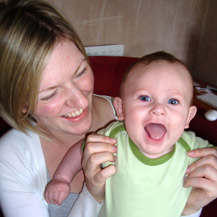Children-focused medicine cabinet for families
When it comes to our children, there’s absolutely nothing we won’t do – and keeping them healthy and safe is one of our most important duties as parents, that’s why we need to be prepared for the most common ailments starting in our home by having a medicine cabinet.
First things first.
Always read and follow the directions on medicine containers and leaflets, and only take the right dosage stated. If you have reservations or questions about any ingredient of the medicine you want to purchase from a local drug store or an online pharmacy like doorsteppharmacy.com, always ask the pharmacist. Keep all medicines out of the sight and reach of kids. A high, lockable medicine cabinet is an ideal place.
Check the expiry dates on a medicine regularly. If a medicine is expired, simply throw it away. You may take it to the pharmacy, where it can be disposed of properly.
Now here’s a list of medicines your medicine cabinet should have, fine-tuned for your kids.
For pain relief. Seeing our kids in pain is one of the worst experience for any parent. Always have a paracetamol and ibuprofen, these meds come in kid-friendly 250mg tablets. Your medicine cabinet should have stacks of cold and flu tablets. These medicines help with minor ailments, such as the common cold, and reduce aches and high temperatures.
For allergies. Common over-the-counter antihistamines are effective enough for dealing with allergies and insect bites. They also help treat hay fever in children and adults. Antihistamines come in the form of tablets (oral antihistamine) or creams that can be applied to the skin (topical antihistamine). Antihistamine cream quickly soothes insect bites and stings, as well as rashes and itching from stinging nettles. Some antihistamines cause drowsiness, so ask your pharmacist or the Pharmacy delivery personnel about antihistamines that don’t have a drowsing effect.
For eczema and sunburn. Many children develop eczema on the back of their knees and front of their elbows, which can be itchy and painful, especially on a hot day at school. Similarly, kids spend a long time outside at school and might come home with sunburn, which can be prickly and tender. Luckily, there are lots of calming and moisturising products out there, like aloe vera gel and shea butter, but sometimes you also need to treat the pain. Something like CBD oil, which you can get first time patient deals on if you just want to try it out, can help to ease pain whilst also helping to treat dry, flaky skin.
For dehydration. Diarrhea, fever and vomiting make kids lose water and other essential minerals, which can lead to dehydration. If your kids have these symptoms and can’t continue eating or drinking normally, oral rehydration salts can ease and restore their body’s natural balance of fluid and mineral, as well as relive tiredness and discomfort.
For diarrhea. Diarrhea can be caused by a variety of things, including stomach virus, food poisoning, and can happen without warning. Because of this, it’s important to keep anti-diarrhea medicine at all times in your medicine cabinet. Diarrhea medicines can rapidly control the unpleasant symptoms of diarrhea. Don’t give this medicine to children under 12 since they may have undesirable side effects. Consult with your pharmacist or GP for advice about a child with this symptom.
First Aid Kit. Aside from the medicines above, your cabinet should have a well-prepared first aid kit for your kids. It should contain the following:
- Plasters and bandages. These can be used to support sprained limbs, injured wrist, and also apply pressure to bigger cuts before carrying to the hospital.
- Used to clean cuts before dressing them. Also used to aid insect bites and stings or for cleaning wounds.
- For splinters stuck in the skin.
- For reading body temperature. Digital thermometers are the most accurate device for readings.


